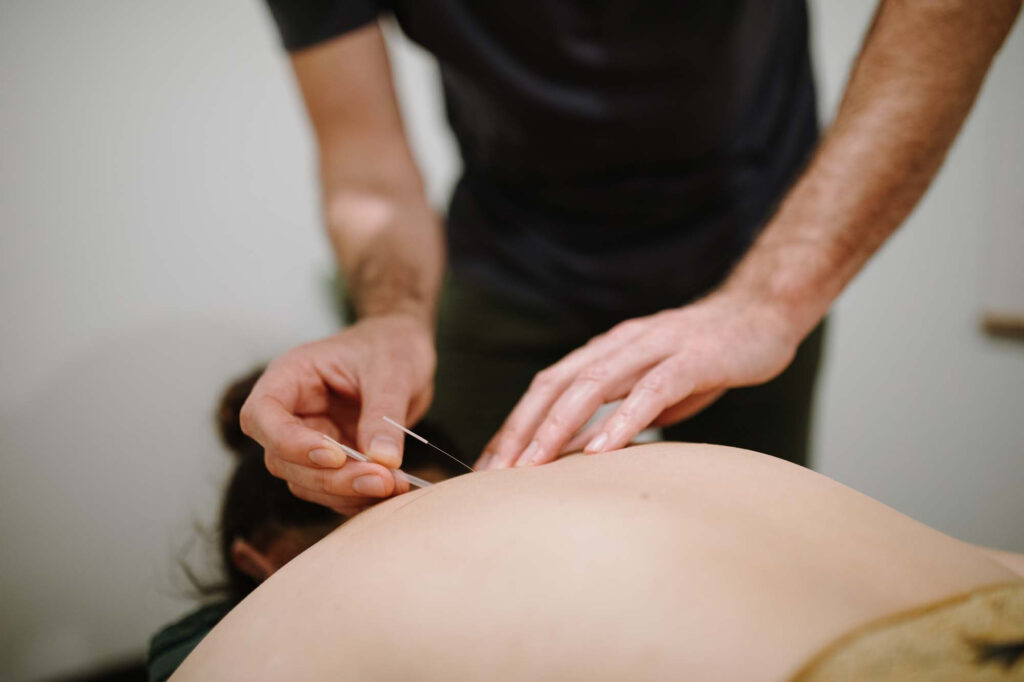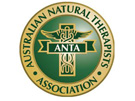Acupuncturist
Time is precious. Let the clinic come to your door clinic and let an expert with 24 years of experience come to you, delivering precise, results-driven care for pain, discomfort, sports injuries, and stress in one comfortable session.
Each needle, each pressure point, comes with clinical understanding. Clients trust hands that have brought relief to – executives, professional athletes, and everyday people – not only in the Northern Rivers (Ballina, Lennox Head, Alstonville), but also through work on cruise ships, South Africa, Zambia, university health clinics, private practices, and volunteer programs.

Mobile Acupuncturist Ballina
Acupuncture is a healing system originating from ancient Chinese practice over 3000 years ago that involves the precise insertion of extremely fine needles into specific points known as acupuncture points. The procedure aims to modulate neurophysiological processes, including pain signaling and autonomic regulation, by stimulating sensory, autonomic and parasympathetic nerves concentrated at these sites. Practitioners employ both traditional frameworks—such as balancing the vital energy or “qi,” along meridians—and modern biomedical paradigms referencing neurotransmitter modulation, endogenous opioid release, and neuroimmune interactions.
Therapeutic effects encompass analgesia for acute and chronic musculoskeletal pain, migraine, osteoarthritis, and adjunct applications for nausea and stress management. Stimulation methods may include manual needling, electroacupuncture or heat. Rigorous procedural standards ensure sterility and patient safety. Contemporary evidence supports efficacy for select pain disorders, with ongoing research elucidating mechanisms and expanding clinical indications. Acupuncture remains widely practiced as both primary and complementary therapy within integrative and conventional medical paradigms.

Does acupuncture hurt?
Acupuncture should not hurt; most people may feel only a mild, brief sensation when the thin needle is inserted. Depending on the acupuncture point, a slight sting may be felt on insertion.
The needles used are extremely fine, much thinner than hypodermic needles used in blood donations and hospitals. Some individuals may experience tingling, warmth, or a dull ache (known as 'de qi') at specific points, which is considered a natural response. The overall discomfort is minimal, and many patients report feeling relaxed during treatment.
Is acupuncture safe and are the needles sterile?
Registered acupuncturists follow strict hygiene protocols to prevent infection and ensure patient safety. Adverse effects are rare and usually mild, making acupuncture a low-risk treatment for most people.
What conditions does acupuncture treat?
Chronic pain
Headaches
Migraines
Arthritis
Stress
Insomnia
Digestive disorders
Musculoskeletal injuries
How many sessions are usually needed to see results?
Sometimes one session, sometimes a few more depending on the condition – it varies.
Acute issues may respond after one or only a few treatments, while chronic or complex conditions can require regular sessions over several weeks. Progress is reviewed after the initial course so the treatment plan can be adjusted as needed.
What should new patients know before starting acupuncture?
New patients should know that acupuncture is a safe, personalised treatment using sterile, single-use needles performed by qualified practitioners to aiming to address conditions such as pain, stress, migraines or sciatica amongst others.
Please print this NEW PATIENT INTAKE FORM and fill it out before our appointment (Not required for existing clients).
It is important to choose a registered acupuncturist who can tailor sessions to your specific conditions and goals. Before starting, discuss your medical history, current medications, and any existing health conditions to ensure proper planning and safety. Ask about session frequency, expected outcomes, potential side effects and how acupuncture may compliment other therapies you are using. Progress is reviewed after the first session to adjust your treatment plan for the best results.
What types of sports injuries respond best to acupuncture treatment?
Sports injuries that respond best to acupuncture include muscle strains, ligament sprains, joint pain and overuse injuries. Electro-stimulation has been shown to be most effective wihtin 72 hours of the injury.
Acupuncture is also effective in addressing inflammation, reducing pain from acute and chronic musculoskeletal conditions, and supporting faster healing for sports-related traumas and repetitive stress injuries.
How quickly can acupuncture accelerate recovery from muscle strains or sprains?
Acupuncture may assist recovery from muscle strains or sprains by boosting circulation, reducing inflammation, and alleviating pain— improvements could be noticed within the first session.
Most athletes report reduced swelling and enhanced mobility within days, especially when acupuncture is started early and combined with a personalised rehabilitation plan.
Is acupuncture recommended alongside physical therapy or other rehab methods?
Acupuncture is recommended as a complementary therapy alongside physical therapy and other rehabilitation methods for improved recovery and pain management.
Combining these treatments often results in better outcomes, with acupuncture assisting in pain reduction naturally and optimising results from exercise-based rehab.
Are there specific acupuncture techniques tailored for athletes?
Specific acupuncture techniques for athletes include, electroacupuncture, gua sha, cupping, heat therapy and trigger point therapy to target muscle rehabilitation.
These advanced methods aim to restore joint and muscle function, treating acute injuries, and managing ongoing pain and mobility, supporting sportspeople to return to peak condition.
Show You Care—Give a Moment of Ease
Surprise your loved one with a gift voucher for remedial massage, massage, or acupuncture—let them choose the treatment they need for pure comfort and renewed energy
Purchase a gift cardWhat to know about acupuncture
What accreditations must an acupuncturist have in Australia?
An acupuncturist in Australia must hold registration with the Chinese Medicine Board of Australia under the Australian Health Practitioner Regulation Agency (AHPRA) and possess recognised qualifications in acupuncture or Chinese Medicine from an accredited institution.
All acupuncturists are required to complete approved training programs that meet national education standards, demonstrate competence in safe and effective clinical practice, and comply with stringent guidelines for infection control and patient safety set by both AHPRA and the Board. Eligibility also includes ongoing professional development and adherence to the Board’s code of conduct and ethical requirements for healthcare providers.ahpra
Which regulatory bodies govern acupuncture safety and practitioner qualifications in Australia?
Acupuncture safety and practitioner qualifications in Australia are regulated by the Australian Health Practitioner Regulation Agency (AHPRA) and the Chinese Medicine Board of Australia.
These authorities oversee professional standards, practitioner registration, education requirements, and compliance with all guidelines for safe, effective acupuncture practice nationwide.
Are there contraindications for acupuncture based on medical history, medication use, or preexisting conditions?
Contraindications for acupuncture include bleeding disorders, immune compromise, certain heart conditions, pregnancy risks, and interactions with anticoagulant medications.
Patients must share their full medical history and current medication list before treatment, as practitioners will modify or avoid acupuncture when specific risks are identified. This careful screening ensures safety and prevents adverse outcomes during therapy.
How do acupuncturists personalize treatment plans using diagnostic methods, such as pulse diagnosis or energy pattern assessments?
Acupuncturists personalize treatment plans by using diagnostic methods like pulse diagnosis, tongue examination, and assessment of energy patterns to identify each patient’s unique symptoms and imbalances.
They select acupuncture points and specific protocols based on these individualized findings, tailoring therapies to optimally address health goals and monitor progress throughout treatment. This approach ensures every session is customized to the patient’s current condition, lifestyle, and response to previous care.
How is purinergic signaling involved in acupuncture’s analgesic effects at a cellular level?
Purinergic signaling contributes to acupuncture’s analgesic effects by triggering the release of ATP and adenosine at needle insertion sites, which then bind to purinergic receptors on nerve cells and suppress pain signals.
When acupuncture needles are inserted, local cells release ATP that is rapidly degraded into adenosine. Adenosine activates A1 receptors on nearby sensory neurons, inhibiting the transmission of pain signals through the nervous system. This process helps reduce inflammation and promotes local pain relief, providing a direct cellular mechanism for acupuncture’s analgesic action.
How do acupuncture techniques differ in their effects on local tissue versus systemic responses?
Acupuncture techniques differ in their effects by producing local tissue responses (such as increased blood flow, reduced inflammation, and microtrauma repair) at needle sites, while systemic responses involve modulation of central nervous system activity, hormone release, and overall pain threshold.
Local effects are generated when needles stimulate nearby nerves, capillaries, and connective tissue, activating immune cells and promoting recovery where inserted. Systemic effects occur as signals travel through nerve pathways to the brain and spinal cord, altering neurotransmitter levels, regulating stress hormones, and influencing body-wide functions such as mood, sleep, and immune modulation. This dual action explains how acupuncture can relieve regional problems and address broader health conditions simultaneously.
How does acupuncture interact with the autonomic nervous system to mediate anti-inflammatory actions?
Acupuncture interacts with the autonomic nervous system to mediate anti-inflammatory actions by stimulating specific nerves that regulate sympathetic and parasympathetic activity, leading to reduced inflammation throughout the body.
When acupuncture needles are inserted into targeted points, they activate sensory nerve fibers that communicate with the central nervous system. This signaling modulates the balance between sympathetic (fight-or-flight) and parasympathetic (rest-and-digest) responses, suppressing the release of pro-inflammatory cytokines and enhancing anti-inflammatory signals. The result is lower tissue swelling, improved immune cell regulation, and support for recovery from inflammatory conditions such as arthritis and injury. This neuroimmune pathway provides a direct mechanism for acupuncture’s effect on inflammation control beyond local tissue responses.
What mechanical effects do acupuncture needles have on connective tissue, and why does this matter for healing?
Acupuncture needles create mechanical effects on connective tissue by inducing micro-deformation, winding collagen fibers, and stimulating fibroblast activity, which leads to increased blood flow, tissue remodeling, and local healing.
When the needle penetrates connective tissue (such as fascia), it causes the fibers to twist and stretch, generating a localized signaling cascade that promotes cellular repair and modulates inflammation. This physical stimulation enhances extracellular matrix remodeling, improves circulation, and can relieve adhesions or tightness, which is essential for functional recovery in musculoskeletal injuries and chronic pain conditions.
What are the technical distinctions between traditional meridian-based and modern anatomical-point acupuncture systems?
Traditional meridian-based acupuncture uses pathways called meridians and points mapped by ancient Chinese medicine, while modern anatomical-point acupuncture targets specific nerves, muscles, and trigger points identified by Western biomedical science.
In the meridian system, treatment relies on balancing “qi” energy flow along invisible lines connecting organs and tissues, selecting points according to patterns of imbalance and traditional diagnostic methods. Modern anatomical-point systems ignore meridian pathways and instead focus on physical, palpable structures such as motor points, myofascial trigger points, and neurovascular bundles. These techniques use precise anatomical landmarks and contemporary understanding of pain physiology to guide needle placement, aiming for direct modulation of nerves, blood vessels, and muscles for therapeutic effect. Both approaches use ultra-fine needles, but their rationale and point selection are rooted in entirely different theoretical frameworks and diagnostic principles.
